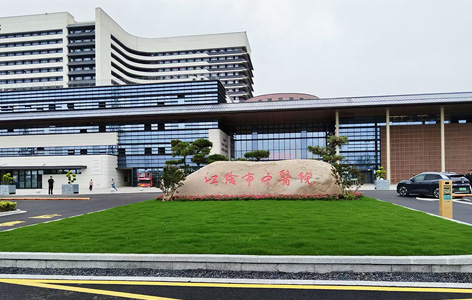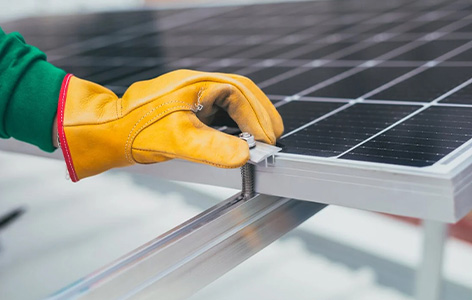News center
The multiple impacts of policies and supply chains on the slowing demand in the global photovoltaic market
2024-12-17
With the acceleration of global energy transition, the application of photovoltaic power generation has attracted much attention and is widely used. According to InfoLink's estimation, the global photovoltaic market demand will fall between 469-533 GW in 2024. Observing the top four global markets: China, the United States, Europe, and India, each region is facing multiple challenges such as changes in the economic environment, policy uncertainty, and supply-demand mismatch. With the continuous expansion of photovoltaic installed capacity, the improvement of power grid conditions will become a key issue, and the fluctuation of supply chain prices and interest rate environment will also bring pressure to investment returns, further increasing the uncertainty of installation demand. It is expected that the market growth after 2025 will slow down compared to this year.
Despite the slowdown in demand growth in traditional major markets, the rise of emerging markets is injecting new growth momentum into the global photovoltaic market. In recent years, the demand in the Middle East market has significantly increased, especially in countries such as Saudi Arabia, the United Arab Emirates, and Oman. With government support and the promotion of multiple utility scale projects, it will help support global demand. In addition, countries such as Thailand, Malaysia, and Vietnam have successively released favorable policies related to green electricity this year, indicating that the demand for photovoltaics in Southeast Asia is expected to increase, making it an emerging market worth paying attention to. Looking ahead to 2025, the global demand for photovoltaics is expected to reach 492-568 GW, with a growth rate of 5-7% compared to 2024.
Among the top four markets, Europe, America, and India account for 80% of global demand
China: The overall market heat is no longer strong, and demand is expected to remain stable next year
The Chinese market still relies on centralized projects as the main demand, but in recent times, the Inner Mongolia region has been affected by the slowdown of external construction speed, distribution and storage, and power restrictions, resulting in delays for most projects. It is expected that the grid connection of centralized projects will not significantly increase until the end of 2024 to 2025. In terms of distributed photovoltaics, a new electricity market trading system was introduced in April this year. The future trading electricity prices may be affected by the Libreville market and compete with each other to fall. Coupled with the current rise in land costs and housing rental fees, the overall investment return rate continues to decline. Currently, a few central enterprises have gradually withdrawn from the distributed market, and some financing companies have also begun to reduce their acquisition volume, leading to a pessimistic market view of the demand increment for distributed photovoltaics in 2025.
In summary, China's photovoltaic market is facing the challenge of slowing demand. According to InfoLink's estimation, the demand in the Chinese market will remain at 240-260 GW in 2024. With the weakening of market heat and the slowdown of project installation, it is conservatively estimated that China's demand may remain the same next year, and the overall demand will fall within the range of 245-265 GW.
Europe: Policy push and economic weakness constrain the growth of photovoltaic demand
Recently, the European Union is pushing for the "Net Zero Industries Act" and the "Critical Raw Materials Act", which officially came into effect in May and June this year respectively. The aim is to increase the proportion of domestic net zero technology and raw materials used, which may help reduce dependence on imported products. However, due to the relatively high cost of local supply, it may push up investment costs for terminal projects. The Anti Forced Labor Product Regulation is expected to come into effect in the second half of 2027. It should be noted whether the EU will draft a list to conduct forced labor investigations on Chinese photovoltaic manufacturers one by one after the law is officially implemented.
Despite the EU's efforts to promote localization, the European photovoltaic market still faces many challenges. Most countries are facing economic weakness and insufficient power grid capacity, leading to oversupply and frequent negative electricity prices in 2024. Especially in Germany and Spain, which account for a large proportion of European photovoltaic demand, there have been issues of stagnant economic growth and delayed large-scale projects, which have affected the overall demand performance in Europe. In addition, the government's subsidy policy has weakened, weakening the public's willingness to install distributed projects, while centralized projects are delayed due to high financing costs, grid congestion, and the current abundant natural gas reserves in Europe, which may further suppress the growth of photovoltaic demand. It is expected that the demand for photovoltaics in Europe will fall between 77-85 GW this year, and may rebound to 85-93 GW next year, with an increase of about 9-10%. However, the long-term growth potential still depends on economic performance and policy direction.
US: Trade barriers intensify, supply chain challenges, demand growth remains to be seen
In the second half of 2024, the US photovoltaic trade barriers underwent significant adjustments. After announcing the cancellation of the exemption for double-sided components, the 201 tariff originally imposed on global imported batteries and components has been increased, and the import duty-free quota for batteries has been raised; The 301 tariff on imported batteries and components from China has also been raised to 50%, and it is expected to impose a 50% tariff on imported Chinese silicon materials and wafers from 2025 onwards. Subsequently, the US Department of Commerce will conduct a anti-dumping and countervailing investigation into four Southeast Asian countries (Cambodia, Malaysia, Thailand, and Vietnam), with preliminary results expected to be announced by the end of September to the end of November.
From the supply side analysis, due to the insufficient domestic silicon wafer and battery production capacity in the United States, the demand for silicon materials and wafers has not significantly increased. On the downstream side, given that local battery production capacity has not yet been implemented on a large scale, even with an increase in battery duty-free quotas, it may still not be sufficient to meet the needs of local component factories. With the gradual production of local batteries in 2024, future tariffs imposed by the United States on Chinese silicon wafers may prompt manufacturers to turn to purchasing higher priced Southeast Asian silicon wafers, thereby driving up terminal project costs. In addition, combined with the current anti-dumping and countervailing measures, the preliminary determination of tax rates will further drive up project costs in the United States.
From the demand side, since last year, due to the impact of the presidential election and high interest rate environment, as well as the uncertainty of photovoltaic subsidy policies, developers' wait-and-see attitude has increased, and delays in the review and grid connection of large-scale projects still exist. In addition, California's NEM 3.0 policy has reduced the sales revenue of distributed users, and it is expected that distributed demand will continue to be weak in 2024, with overall market demand expected to fall between 38-42 GW; In the long run, the development of photovoltaics still needs to wait for policies to gradually be implemented. Conservatively, it is estimated that the demand for photovoltaics in the United States will be around 38-44 GW by 2025.
India: Continued localization policies, favorable government projects, growing demand
As one of the top five photovoltaic markets, India's demand increment mainly relies on government project support, and most projects are based on the 2026 installation target as a policy node. With the continuous promotion of government led project bidding, it is expected to usher in a large-scale installation wave in 2025. It is estimated that the demand in 2025 can reach 25-35 GW, which will grow by nearly 25-40% compared to this year's 20-25 GW.
It should be noted that all local government projects must comply with the ALMM component list. In addition to the release of the local component list, the ALMM battery list proposed by the local government is also expected to be implemented in April 2026. At that time, government projects will only be able to use local components assembled from Indian batteries. At present, the local component production capacity is sufficient to meet the terminal demand. Due to cost considerations, even though India has a 25% BCD import tax rate on Chinese batteries, local component factories still mainly use Chinese batteries. However, it is expected that the local battery production capacity in India will gradually increase in response to the ALMM battery clearance to be implemented in 2026.
The demand in various markets is fluctuating, and emerging markets are driving demand growth
The global photovoltaic market presents a complex supply-demand pattern under multiple influences. Due to the current low point of component prices, there is relatively limited room for further decline, and the future growth momentum of the market will rely more on terminal installation capacity and policy promotion. At present, some market demand is showing a weakening trend, such as Brazil's duty-free quota for imported components being reduced year by year, and the subsequent imposition of tax rates may lead to an increase in the cost of terminal projects, while South Africa's project progress is delayed due to insufficient infrastructure and power grid problems, and the overall market demand is not optimistic. Although emerging markets with potential will support global demand growth, it is still expected that the global market will shift from high-speed growth in the past to slow growth after 2025.
Despite the slowdown in demand growth in traditional major markets, the rise of emerging markets is injecting new growth momentum into the global photovoltaic market. In recent years, the demand in the Middle East market has significantly increased, especially in countries such as Saudi Arabia, the United Arab Emirates, and Oman. With government support and the promotion of multiple utility scale projects, it will help support global demand. In addition, countries such as Thailand, Malaysia, and Vietnam have successively released favorable policies related to green electricity this year, indicating that the demand for photovoltaics in Southeast Asia is expected to increase, making it an emerging market worth paying attention to. Looking ahead to 2025, the global demand for photovoltaics is expected to reach 492-568 GW, with a growth rate of 5-7% compared to 2024.
Among the top four markets, Europe, America, and India account for 80% of global demand
China: The overall market heat is no longer strong, and demand is expected to remain stable next year
The Chinese market still relies on centralized projects as the main demand, but in recent times, the Inner Mongolia region has been affected by the slowdown of external construction speed, distribution and storage, and power restrictions, resulting in delays for most projects. It is expected that the grid connection of centralized projects will not significantly increase until the end of 2024 to 2025. In terms of distributed photovoltaics, a new electricity market trading system was introduced in April this year. The future trading electricity prices may be affected by the Libreville market and compete with each other to fall. Coupled with the current rise in land costs and housing rental fees, the overall investment return rate continues to decline. Currently, a few central enterprises have gradually withdrawn from the distributed market, and some financing companies have also begun to reduce their acquisition volume, leading to a pessimistic market view of the demand increment for distributed photovoltaics in 2025.
In summary, China's photovoltaic market is facing the challenge of slowing demand. According to InfoLink's estimation, the demand in the Chinese market will remain at 240-260 GW in 2024. With the weakening of market heat and the slowdown of project installation, it is conservatively estimated that China's demand may remain the same next year, and the overall demand will fall within the range of 245-265 GW.
Europe: Policy push and economic weakness constrain the growth of photovoltaic demand
Recently, the European Union is pushing for the "Net Zero Industries Act" and the "Critical Raw Materials Act", which officially came into effect in May and June this year respectively. The aim is to increase the proportion of domestic net zero technology and raw materials used, which may help reduce dependence on imported products. However, due to the relatively high cost of local supply, it may push up investment costs for terminal projects. The Anti Forced Labor Product Regulation is expected to come into effect in the second half of 2027. It should be noted whether the EU will draft a list to conduct forced labor investigations on Chinese photovoltaic manufacturers one by one after the law is officially implemented.
Despite the EU's efforts to promote localization, the European photovoltaic market still faces many challenges. Most countries are facing economic weakness and insufficient power grid capacity, leading to oversupply and frequent negative electricity prices in 2024. Especially in Germany and Spain, which account for a large proportion of European photovoltaic demand, there have been issues of stagnant economic growth and delayed large-scale projects, which have affected the overall demand performance in Europe. In addition, the government's subsidy policy has weakened, weakening the public's willingness to install distributed projects, while centralized projects are delayed due to high financing costs, grid congestion, and the current abundant natural gas reserves in Europe, which may further suppress the growth of photovoltaic demand. It is expected that the demand for photovoltaics in Europe will fall between 77-85 GW this year, and may rebound to 85-93 GW next year, with an increase of about 9-10%. However, the long-term growth potential still depends on economic performance and policy direction.
US: Trade barriers intensify, supply chain challenges, demand growth remains to be seen
In the second half of 2024, the US photovoltaic trade barriers underwent significant adjustments. After announcing the cancellation of the exemption for double-sided components, the 201 tariff originally imposed on global imported batteries and components has been increased, and the import duty-free quota for batteries has been raised; The 301 tariff on imported batteries and components from China has also been raised to 50%, and it is expected to impose a 50% tariff on imported Chinese silicon materials and wafers from 2025 onwards. Subsequently, the US Department of Commerce will conduct a anti-dumping and countervailing investigation into four Southeast Asian countries (Cambodia, Malaysia, Thailand, and Vietnam), with preliminary results expected to be announced by the end of September to the end of November.
From the supply side analysis, due to the insufficient domestic silicon wafer and battery production capacity in the United States, the demand for silicon materials and wafers has not significantly increased. On the downstream side, given that local battery production capacity has not yet been implemented on a large scale, even with an increase in battery duty-free quotas, it may still not be sufficient to meet the needs of local component factories. With the gradual production of local batteries in 2024, future tariffs imposed by the United States on Chinese silicon wafers may prompt manufacturers to turn to purchasing higher priced Southeast Asian silicon wafers, thereby driving up terminal project costs. In addition, combined with the current anti-dumping and countervailing measures, the preliminary determination of tax rates will further drive up project costs in the United States.
From the demand side, since last year, due to the impact of the presidential election and high interest rate environment, as well as the uncertainty of photovoltaic subsidy policies, developers' wait-and-see attitude has increased, and delays in the review and grid connection of large-scale projects still exist. In addition, California's NEM 3.0 policy has reduced the sales revenue of distributed users, and it is expected that distributed demand will continue to be weak in 2024, with overall market demand expected to fall between 38-42 GW; In the long run, the development of photovoltaics still needs to wait for policies to gradually be implemented. Conservatively, it is estimated that the demand for photovoltaics in the United States will be around 38-44 GW by 2025.
India: Continued localization policies, favorable government projects, growing demand
As one of the top five photovoltaic markets, India's demand increment mainly relies on government project support, and most projects are based on the 2026 installation target as a policy node. With the continuous promotion of government led project bidding, it is expected to usher in a large-scale installation wave in 2025. It is estimated that the demand in 2025 can reach 25-35 GW, which will grow by nearly 25-40% compared to this year's 20-25 GW.
It should be noted that all local government projects must comply with the ALMM component list. In addition to the release of the local component list, the ALMM battery list proposed by the local government is also expected to be implemented in April 2026. At that time, government projects will only be able to use local components assembled from Indian batteries. At present, the local component production capacity is sufficient to meet the terminal demand. Due to cost considerations, even though India has a 25% BCD import tax rate on Chinese batteries, local component factories still mainly use Chinese batteries. However, it is expected that the local battery production capacity in India will gradually increase in response to the ALMM battery clearance to be implemented in 2026.
The demand in various markets is fluctuating, and emerging markets are driving demand growth
The global photovoltaic market presents a complex supply-demand pattern under multiple influences. Due to the current low point of component prices, there is relatively limited room for further decline, and the future growth momentum of the market will rely more on terminal installation capacity and policy promotion. At present, some market demand is showing a weakening trend, such as Brazil's duty-free quota for imported components being reduced year by year, and the subsequent imposition of tax rates may lead to an increase in the cost of terminal projects, while South Africa's project progress is delayed due to insufficient infrastructure and power grid problems, and the overall market demand is not optimistic. Although emerging markets with potential will support global demand growth, it is still expected that the global market will shift from high-speed growth in the past to slow growth after 2025.






